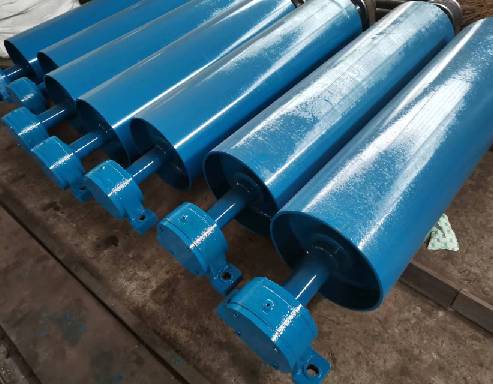 Afrikaans
Afrikaans  Albanian
Albanian  Amharic
Amharic  Arabic
Arabic  Armenian
Armenian  Azerbaijani
Azerbaijani  Basque
Basque  Belarusian
Belarusian  Bengali
Bengali  Bosnian
Bosnian  Bulgarian
Bulgarian  Catalan
Catalan  Cebuano
Cebuano  Corsican
Corsican  Croatian
Croatian  Czech
Czech  Danish
Danish  Dutch
Dutch  English
English  Esperanto
Esperanto  Estonian
Estonian  Finnish
Finnish  French
French  Frisian
Frisian  Galician
Galician  Georgian
Georgian  German
German  Greek
Greek  Gujarati
Gujarati  Haitian Creole
Haitian Creole  hausa
hausa  hawaiian
hawaiian  Hebrew
Hebrew  Hindi
Hindi  Miao
Miao  Hungarian
Hungarian  Icelandic
Icelandic  igbo
igbo  Indonesian
Indonesian  irish
irish  Italian
Italian  Japanese
Japanese  Javanese
Javanese  Kannada
Kannada  kazakh
kazakh  Khmer
Khmer  Rwandese
Rwandese  Korean
Korean  Kurdish
Kurdish  Kyrgyz
Kyrgyz  Lao
Lao  Latin
Latin  Latvian
Latvian  Lithuanian
Lithuanian  Luxembourgish
Luxembourgish  Macedonian
Macedonian  Malgashi
Malgashi  Malay
Malay  Malayalam
Malayalam  Maltese
Maltese  Maori
Maori  Marathi
Marathi  Mongolian
Mongolian  Myanmar
Myanmar  Nepali
Nepali  Norwegian
Norwegian  Norwegian
Norwegian  Occitan
Occitan  Pashto
Pashto  Persian
Persian  Polish
Polish  Portuguese
Portuguese  Punjabi
Punjabi  Romanian
Romanian  Russian
Russian  Samoan
Samoan  Scottish Gaelic
Scottish Gaelic  Serbian
Serbian  Sesotho
Sesotho  Shona
Shona  Sindhi
Sindhi  Sinhala
Sinhala  Slovak
Slovak  Slovenian
Slovenian  Somali
Somali  Spanish
Spanish  Sundanese
Sundanese  Swahili
Swahili  Swedish
Swedish  Tagalog
Tagalog  Tajik
Tajik  Tamil
Tamil  Tatar
Tatar  Telugu
Telugu  Thai
Thai  Turkish
Turkish  Turkmen
Turkmen  Ukrainian
Ukrainian  Urdu
Urdu  Uighur
Uighur  Uzbek
Uzbek  Vietnamese
Vietnamese  Welsh
Welsh  Bantu
Bantu  Yiddish
Yiddish  Yoruba
Yoruba  Zulu
Zulu Different Types of Pulleys Used in Conveyor Belt Systems for Efficient Material Handling
Types of Pulleys in Conveyor Belts
Conveyor belts are essential components in various industries, enabling efficient transportation of materials across different stages of production and processes. One of the critical elements of a conveyor system is the pulley, which plays a significant role in the operation and functionality of the conveyor belt. Understanding the types of pulleys used in conveyor belts can enhance efficiency, performance, and maintenance.
1. Drive Pulley
The drive pulley, also known as the main pulley, is crucial for the conveyor's operation. It is powered by a motor that provides the necessary force to move the belt forward. The drive pulley is typically located at one end of the conveyor system and is connected to the motor via a series of belts or gears. Drive pulleys can vary in size and diameter depending on the load capacity and desired speed of the conveyor system. Proper selection and maintenance of drive pulleys are vital for optimal performance, as they directly influence the belt's motion and speed.
2. Idler Pulley
Idler pulleys are used to support the conveyor belt and maintain its tension without powering it. These pulleys are critical for guiding the belt along its path and ensuring it remains aligned. They are located throughout the length of the conveyor system, providing support and preventing sagging. Idler pulleys play a significant role in reducing wear and tear on the belt, enhancing its lifespan. There are different types of idler pulleys, including flat and trough idlers, each designed for specific applications and materials being transported.
types of pulley in conveyor belt

3. Tail Pulley
The tail pulley serves as the opposing end to the drive pulley and is essential for returning the conveyor belt to its original position. Located at the tail end of the conveyor system, this pulley helps facilitate the downward return of the belt after it has reached the end of the material transfer. Tail pulleys help maintain tension in the belt, ensuring smooth operation during loading and unloading processes. Additionally, they aid in the proper alignment of the belt, preventing misalignment and potential damage.
4. Take-Up Pulley
The take-up pulley is an innovative component that plays a crucial role in managing belt tension. This pulley is equipped with an adjustment mechanism that allows operators to modify the tension of the conveyor belt as necessary. Proper tension is essential for optimal performance, as it helps prevent slippage and excessive wear on both the belt and the pulleys. Over time, belt elongation may occur due to the continuous operation of the conveyance system. The take-up pulley ensures that any slack can be adjusted to maintain the desired tension.
Conclusion
Understanding the various types of pulleys in conveyor belt systems is vital for the efficiency and longevity of the operation. Drive pulleys provide the necessary movement, idler pulleys support and maintain alignment, tail pulleys facilitate return motion, and take-up pulleys adjust tension. Selecting the right pulleys and maintaining them properly can lead to improvements in productivity, reduced operational costs, and prolonged equipment lifespan. Investing time and resources into understanding these components will undoubtedly enhance the overall performance of conveyor systems in any industrial application.
-
Trusted Conveyor Solutions from Leading Conveyor Idler Roller ManufacturersNewsJun.27,2025
-
Reliable Return Idler Solutions for Efficient Belt Conveyor SystemsNewsJun.27,2025
-
Precision Conveyor Accessories for Streamlined Material HandlingNewsJun.27,2025
-
High-Quality Belt Conveyor Idler Solutions for Efficient Material HandlingNewsJun.27,2025
-
High-Performance Belt Conveyor Pulleys for Reliable Material HandlingNewsJun.27,2025
-
Enhancing Material Handling EfficiencyNewsJun.27,2025





























